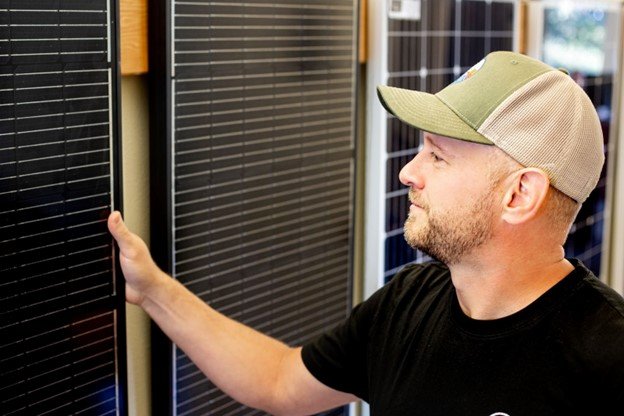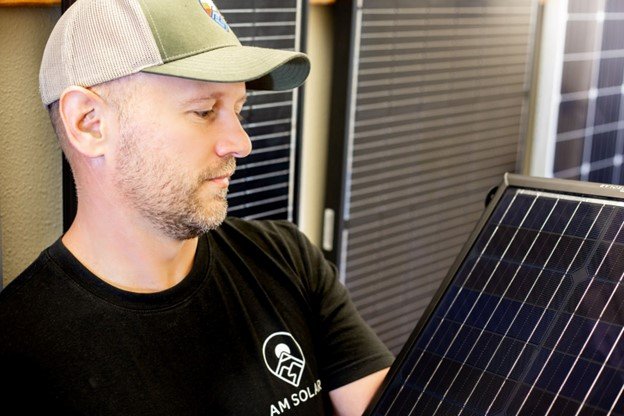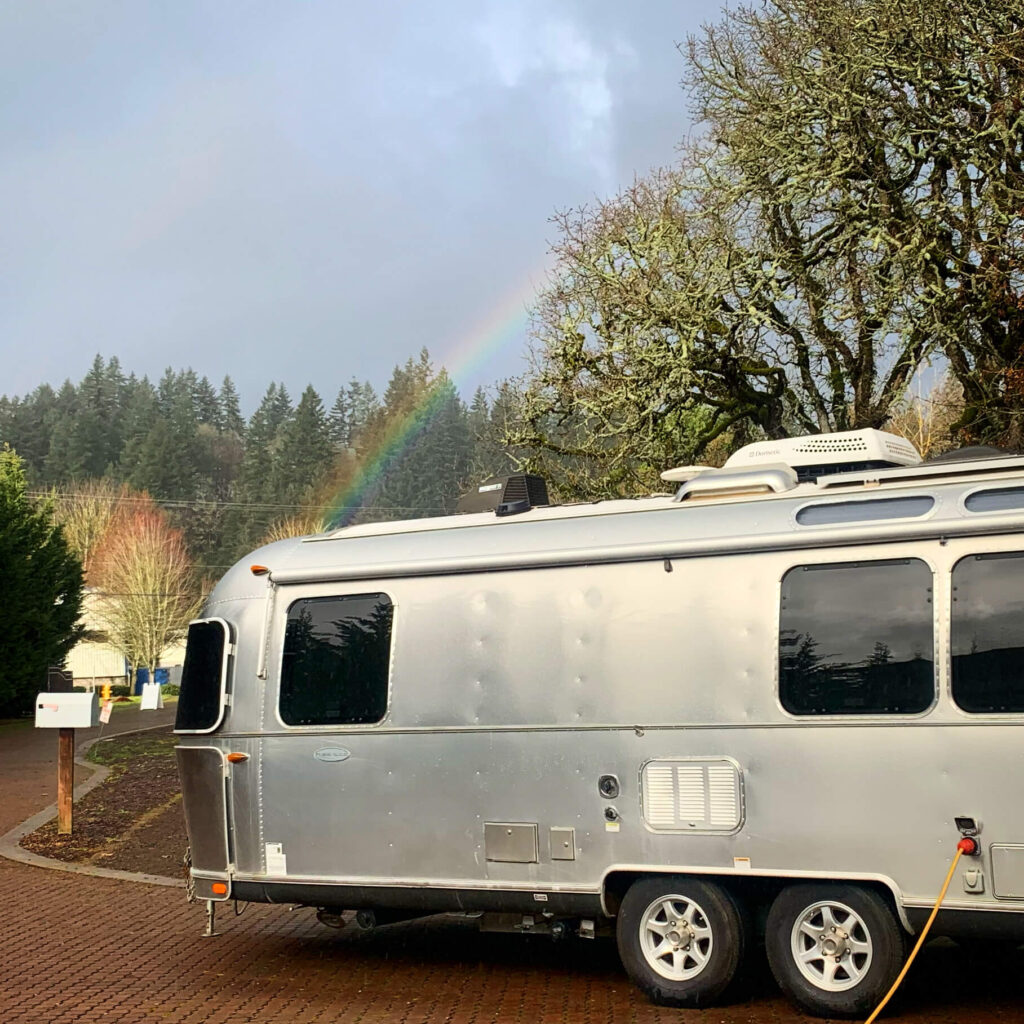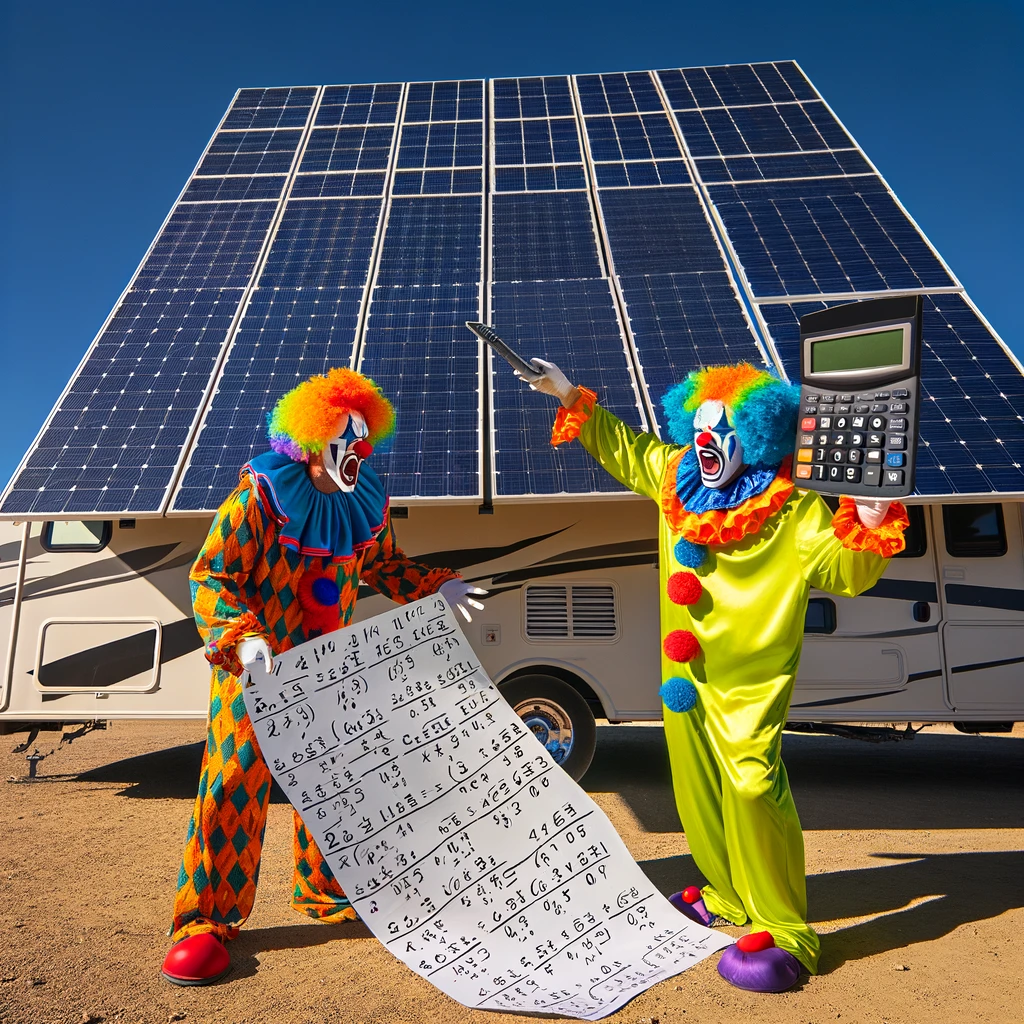How Much Solar Power Do I Need?
This seems to be the most common question we come across. The answer is… 300W (mic drop)

You always remember your first solar panel.
…Not really, although in most cases, 300W is a pretty good answer.
The real answer depends on what you want the solar to do for you, and hopefully your expectations are in line with the realm of possibilities, limited by budget, space constraints, and how much power the sun delivers per square foot to your part of planet Earth.
Since a system can be expanded over time, the most important constraint is the physical space where you can mount solar panels. If you’re pretty sure maxing out your available roof space is going to be cost-prohibitive, factor in a budget constraint. If you are only going to power some small loads, and don’t see that need changing in the foreseeable future, then you’ll likely want to do some production calculations and establish an energy production goal.

They have their mother’s eyes.
Solar doesn’t have to be your only charging source.
This eventually leads to another common question “Are you saying I won’t need a gas generator anymore?” Despite wearing a shirt with the word “Solar” on it, I do not think solar panels are the cure to all energy problems. Solar panels are one of many ways to charge a battery. Other options include alternator charging, topping off a big battery bank on shore power, and bringing in a gas generator when needed. Solar panels will reduce your demand on the generator or a shore power connection, and if your loads are small enough, it will eliminate it. But, if you want to run an air conditioner at all, the sun just isn’t going to put out enough energy per square foot to offset that.
If you plan to have alternator charging through a 7-pin connector, factor in about 11A, or 132Wh/hr. If you are using a 30A DC/DC charger, you can get 360Wh per hour of driving. If you have a Cyrix battery combiner, you might get 150A.
If you use shore power to top off batteries, a simple system will charge at 30A (240Ah in an eight-hour night). More advanced systems charge 80A or even 120A (960Ah in a night). Once in your battery bank, a single 100Ah battery will store the equivalent of the daily production of roughly 300W of solar.
With a gas generator, you’ll be able to power your loads and charge your batteries (like you’re on shore power) simultaneously.
Have reasonable output expectations.
In decent sun, it’s reasonable to expect 3Wh per day, per 1W of rated solar capacity. That means, a 100W panel will give you about 300Wh per day of charge (or 25Ah). Of course, this fluctuates depending on weather conditions, latitude, time of year, shade, and if your battery bank is already full or not.
We come to this 3:1 number because according to NREL, a tilted solar array in Eugene Oregon will deliver 2.95:1 as a yearly average. Since Eugene has a relatively rainy climate, and has a higher latitude than most of our customers, and most people aren’t factoring in winter months, “3” makes for simple math. Depending on your location, and the month, you might see numbers that range from 1 to 5, but an average of 3 is reasonable.
To summarize, a 300W solar array will probably give you 900Wh per day (75Ah per day.)
Size The System To Your Loads
If converting Watts to Watt-hours and Amp-hours makes you uncomfortable, there are easier ways. Firstly, you can fill out a Quote Request with AM Solar and we’ll size the system for you, or you can size it based on loads.
Battery Maintenance – Assuming all your loads are shut off, and the rig is in storage, it shouldn’t take more than 20W of solar to keep your battery system maintained.
Lights and Fans – These are very efficient. You might use about 200Wh/day with these loads. That works out to about 17Ah, or less than the daily production of a single 100W solar panel.
Laptop – For easy math, a laptop uses about 100W. If you want to use it for three hours per day, you’ll need 100W of solar dedicated to your laptop.
Instant Pot – Assuming your instant pot uses 1000W, and it takes half an hour to cook a meal, you will need the daily energy production from about 200W of solar to offset the cooking of that meal.
DC Refrigerator – To offset the daily consumption of a DC refrigerator, you will need at least 150W of solar.
Residential Refrigerator – We typically recommend at least 400W of solar dedicated to offsetting the draw of the refrigerator.
Blender – A typical blender uses 1000W and runs for about 30 seconds. This works out to about 9Wh, which is pretty insignificant.
Microwave – Like the blender, a microwave doesn’t run for very long. If you use 1500W for one minute, that works out to 25Wh, or about 2Ah, which is pretty insignificant in terms of solar production.
E-Bike Charger – A 50V 15Ah E-Bike battery stores 750W. It would take a 250W solar array to generate this much energy in a single day.
12V DC Air Conditioner – At full output, these units can draw 100A. If you want to run one for one hour at full blast, you will need 400W of solar to offset that energy consumption.
120V AC Air Conditioner – A 15,000 BTU air conditioner might consume about 15A at 120V. This works out to 1800W. To run an air conditioner like this for one hour, you will need the daily production of 600W of solar panels. It isn’t reasonable to expect to park in the desert and run your air conditioner all day off of solar. If this is what you need to do, get some gas and a generator.
Size Based On Your Vehicle Type
Another way you can determine how much solar to get is to just do what everyone else does, and follow this guide to design a system similar to what other people are doing with your type of vehicle.
Van, Class B – 200W – 400W
Truck Camper – 200W – 300W
Boat – 30W – 300W
Travel Trailer – 200W – 600W
Class C – 200W – 500W
Skoolie – 400W – 1200W
Class A, 5th Wheel – 600W – 2800W
Determining how much solar you need involves understanding your space limitations and energy requirements. If you feel your needs may change over time, start with a charge controller that gives you some extra capacity for expansion. While solar power is an excellent choice for convenient energy, it is typically used as one of many charging inputs for meeting all your power demands. By assessing your needs and setting realistic expectations, you can design a solar system that best suits your RV or off-grid lifestyle.
In our next blog, we will delve into solar array design and how to select the best solar charge controller for your specific application. Stay tuned!




